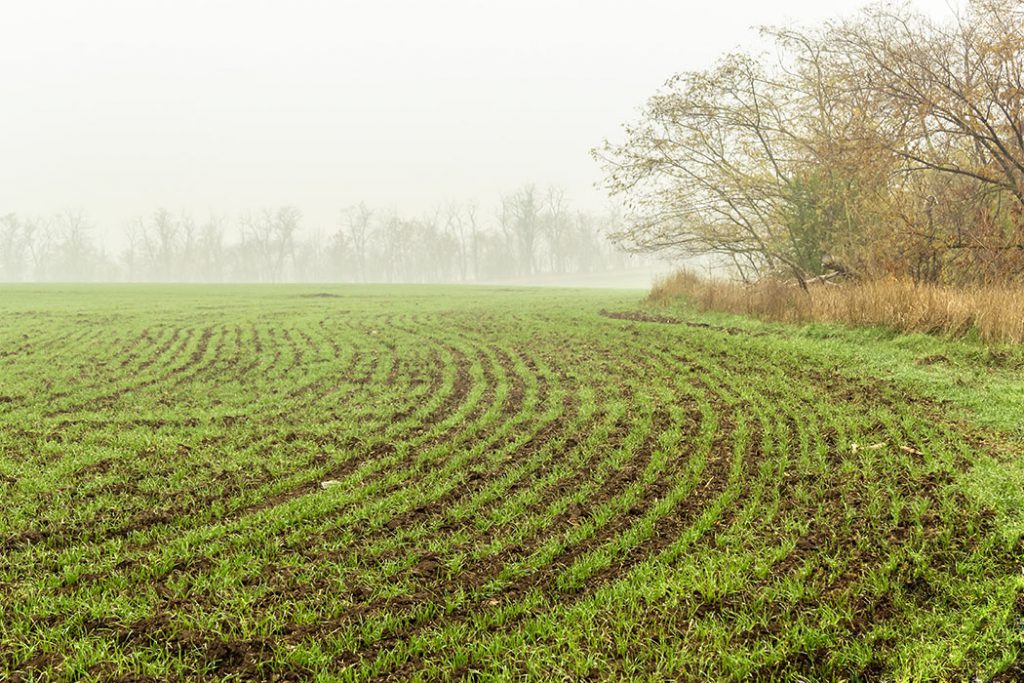Farmers plant seeds in the fall too

Grains can be planted in the spring, but farmers plant seeds in the fall too! Now that the Thanksgiving holiday is over and the harvest is up and running (wheat is done and soybeans and corn are well underway), many might not realize that a great deal of planting for the new year is also already underway. Farmers will plant wheat now, to be grown over the winter for harvest next summer. Not only is Winter Wheat a staple ingredient for some of our favorite recipes, it also plays a big role in sustainable farming and keeping weeds, diseases and insects at bay, which helps farmers limit the use of expensive pesticides.
Winter Wheat is grown during Canadian winters
Winter wheat is hardier than other wheats, and it has a higher gluten protein content (in its food uses, gluten is the protein that gives dough elasticity to rise and keep its shape). Winter wheat is used to produce flour for yeast breads and other chewy grain products; it is also blended with soft spring wheat to produce all-purpose flour.
When farmers plant wheat in the fall, it must survive the cold winter. A process inside the plant called vernalization is what allows plants to flower in the spring, after long periods of colder weather. Many other species of plants undergo vernalization, including a variety of fruit tree species and annual and biennial flowering plants.
Many environmentally friendly and sustainable farming practices begin now
The fall time is also a time in which farmers plant their cover crops, which are important to maintaining soil health. A cover crop is grown by farmers primarily to benefit the soil. Cover crops help the soil by preventing soil erosion, suppressing weeds, injecting organic nutrients, improving soil fertility and quality.
Winter wheat and oats have dual purposes as they can be used as a cover crop as well as a commercial grain that will be sold once harvested. Other crops include red clover, sunflowers, radishes, alfalfa, and rye.
Farmers will often plant their cover crops into a field that has a crop growing or, when that field may have bare soil. The cover crop that is grown overwinter will either be sprayed or tilled in the spring to prep that field for spring planting. If it is winter wheat, the field will grow until maturity when it will be harvested and sold as commercial grain.
Cover crops help to suppress pests and diseases. A farmer might plant a cover crop to break the cycle of pests in the soil. For example, an insect that likes to grow in wheat, might not survive when red clover is grown. This breaks the insects’ life cycles and could potentially remove a generation of insects off the field without resorting to spraying an insecticide.
Farmers can use cover crops to improve soil nutrients. Leaving a cover crop on the field to decompose will increase nutrients in the soil. This can help improve soil quality for the next crop grown in that field and reduce the amount of fertilizers farmers will purchase and apply.
Cover crops also play a part in helping lakes and rivers. Cover crops help reduce the amount of water that drains off a field when it rains, especially between seasons when the field might otherwise be empty. The roots of these crops create pores in the soil, so water drains deep into the ground. This protects streams and waterways that eventually drain into Ontario’s lakes. Organic matter, fertilizer and topsoil are able to remain in the field longer, thanks to the cover crops planted.



